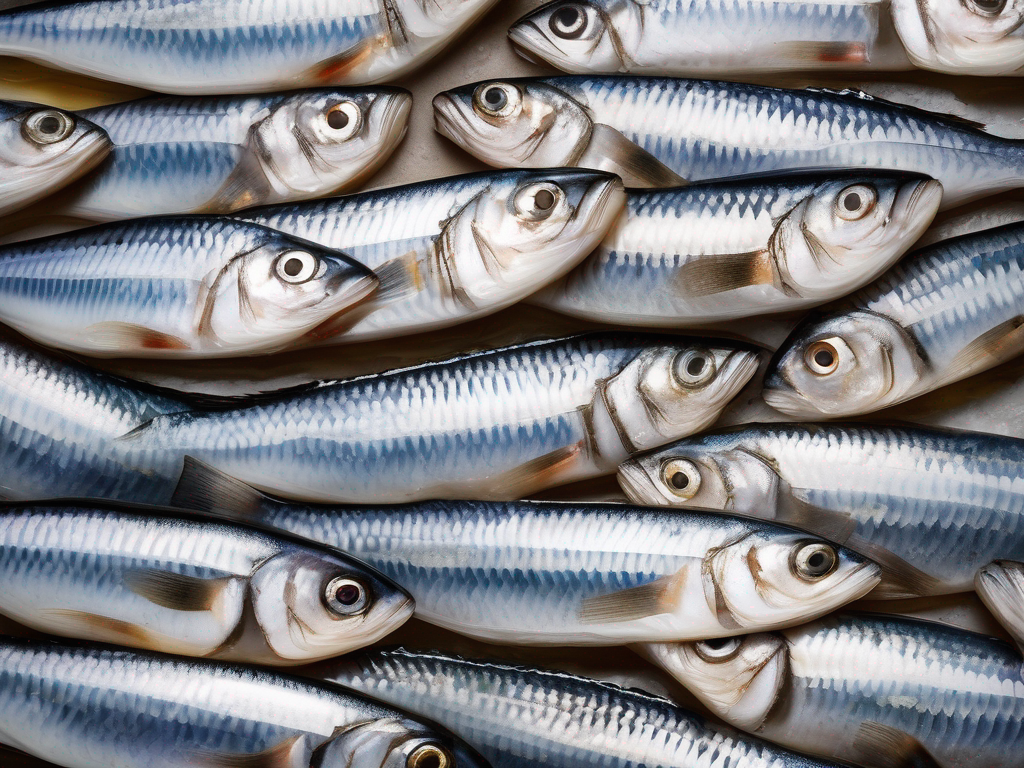
Signs that Atlantic Herring has Gone Bad
Get Your Free Food Safety Cheat Sheet
30 most common foods with instant answers. Print it and stick it on your fridge—completely free!
Signs that Atlantic Herring has Gone Bad
Atlantic herring is a popular fish known for its rich flavor and versatility in cooking. However, like all seafood, herring can spoil if not stored properly or if it has passed its expiration date. In this blog post, we will discuss the signs that indicate Atlantic herring has gone bad and provide you with practical tips on how to ensure the safety and quality of your fish. (Atlantic herring)
Understanding Atlantic Herring
Before we delve into the signs of spoilage, let's first understand what Atlantic herring is and why it is important to handle it with care. [Atlantic herring](/food/atlantic herring) is a small, oily fish that is rich in omega-3 fatty acids and protein. It is commonly used in dishes such as pickled herring, smoked herring, and herring fillets.
The Shelf Life of Atlantic Herring
Like all seafood, Atlantic herring has a limited shelf life, and it is important to consume it before it spoils. The shelf life of herring can vary depending on how it is stored and handled. Here are some general guidelines for the shelf life of Atlantic herring:
- Fresh herring: 1-2 days in the refrigerator
- Smoked herring: 1-2 weeks in the refrigerator
- Canned herring: 2-5 years if stored in a cool, dry place
Signs that Atlantic Herring has Gone Bad
Now, let's look at the signs that indicate your Atlantic herring has gone bad and should not be consumed:
1. Foul Odor
- If your herring has a strong, fishy odor that is unpleasant or sour, it is likely spoiled.
2. Discoloration
- Look for any changes in the color of the herring. If it appears dull, discolored, or has dark spots, it may be a sign of spoilage.
3. Slimy Texture
- Fresh herring should have a firm texture. If it feels slimy or slippery to the touch, it is an indication that it has gone bad.
4. Mold or Growth
- Any visible mold or growth on the herring is a clear sign that it is no longer safe to eat.
5. Off Taste
- If the herring tastes off, bitter, or rancid, it is best to discard it to avoid foodborne illness.
Tips for Ensuring the Safety of Atlantic Herring
To prevent your Atlantic herring from going bad and ensure its safety for consumption, here are some practical tips to keep in mind:
-
Proper Storage: Store fresh herring in the refrigerator at temperatures below 40°F (4°C). Smoked and canned herring should also be stored in a cool, dry place away from direct sunlight.
-
Use-by Date: Always check the expiration date on the packaging of your herring and consume it before the date indicated.
-
Cook Thoroughly: When cooking herring, make sure it reaches the recommended internal temperature of 145°F (63°C) to kill any harmful bacteria.
-
Avoid Cross-Contamination: When handling herring, ensure that it does not come into contact with other raw foods to prevent the spread of bacteria.
-
Smell and Taste Test: Before consuming herring, always smell it to check for any off odors and taste a small amount to ensure it tastes fresh.
Conclusion
In conclusion, it is essential to be aware of the signs that indicate your Atlantic herring has gone bad to prevent foodborne illness and ensure you are enjoying fresh and safe seafood. By following the tips mentioned in this blog post and being vigilant about the quality of your herring, you can continue to enjoy this nutritious fish in your meals with peace of mind. Remember, when in doubt, it is always better to err on the side of caution and discard any herring that shows signs of spoilage. (Atlantic herring)

Authoritative Food Safety References
These agencies and university labs inform every tip and health precaution we publish.
USDA FoodKeeper – Cold Storage Guidelines
Official refrigerator, freezer, and pantry timelines maintained by the U.S. Department of Agriculture.
Visit USDA FoodKeeperFDA Produce Safety Rule & Grower Guidance
Field-to-fridge handling practices that prevent contamination of fruits, vegetables, and leafy greens.
Visit FDA Produce SafetyCDC Foodborne Illness Prevention Hub
Surveillance-backed guidance on pathogens, symptoms, and steps to reduce foodborne illness risk.
Visit CDC Food SafetyUC Davis Postharvest Technology Center
University research detailing optimal storage atmospheres for produce after harvest.
Visit UC Davis PostharvestPenn State Extension – Home Food Preservation & Safety
Peer-reviewed extension bulletins on safe canning, chilling, and reheating practices.
Visit Penn State ExtensionQ: Can I still eat Atlantic herring if it has been in the fridge for a few days?
Q: How long does Atlantic herring last in the fridge?
Q: Can I freeze Atlantic herring to extend its shelf life?
Q: Are there any health risks associated with consuming spoiled Atlantic herring?
Get Your Free Food Safety Cheat Sheet
30 most common foods with instant answers. Print it and stick it on your fridge—completely free! Want more? Upgrade to the complete guide with 70+ foods.
Scan your food directly and get instant safety info using our AI-powered camera feature.